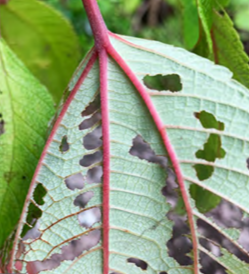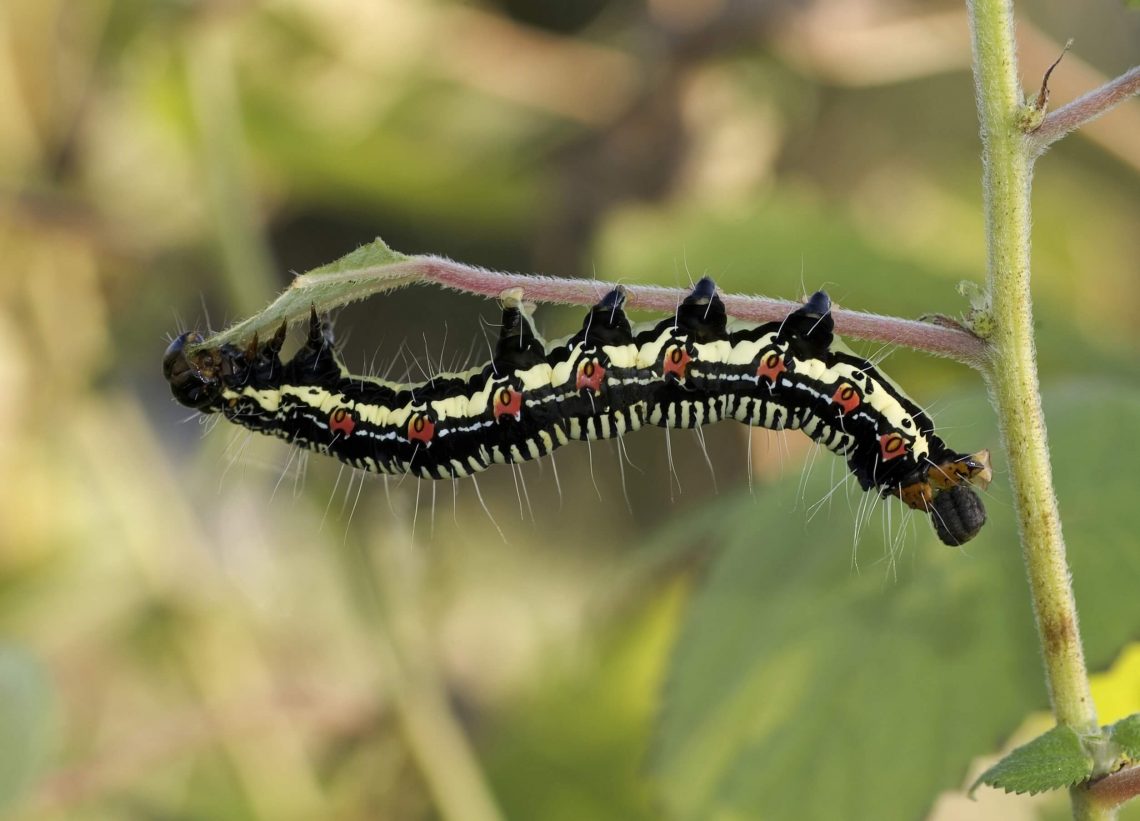
Ramie Moth
REPORT IF SEEN: Contact BIISC if you find a ramie moth. Send us a picture!
The ramie moth (Arcte coerula) is a destructive caterpillar that can completely defoliate native māmaki. This caterpillar was first discovered in November 2018 on Maui where it was destroying māmaki plants. Since then, it has spread to the Big Island and was found on the east side in November 2020. It seems to be slowly spreading throughout the islands as it has been found on Oahu in 2024. This is the first record of this pest in the United States. It’s known to feed on members of the nettle family (Urticaceae). Besides harming the māmaki plant, this caterpillar also poses a threat to the native Kamehameha butterfly as it competes for the same food resources.
The caterpillars can be somewhat difficult to identify, as they have multiple color morphs and could look similar to the native Kamehameha butterfly caterpillar. The young ramie will start by chewing holes in the middle of the leaf and creating larger gaps as they grow, leaving only the main veins. In contrast, Kamehameha caterpillars start eating from the edge of the leaves, and young Kamehameha caterpillars will fold over the edges of the leaf to make a tent for protection.
Distribution
As of April 2022, ramie moth has only been found on the east side of the Big Island, from Puna to Waipio. Please report any new or unusual caterpillars you encounter.
Reporting a Sighting
If you encounter a caterpillar you suspect is ramie moth, take pictures that clearly show the sides and markings. If possible, include plant damage. Submit those pictures to us via Facebook, Instagram, email biisc@hawaii.edu, or text 808-731-9232. Researchers are in need of live caterpillars for study, so try to capture the insect and keep it secure until it is determined what the species is.
Ramie Moth (Arcte coerula)
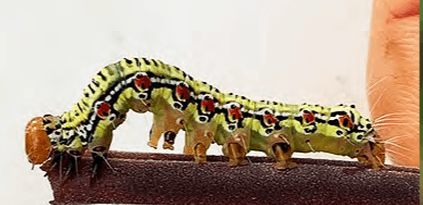
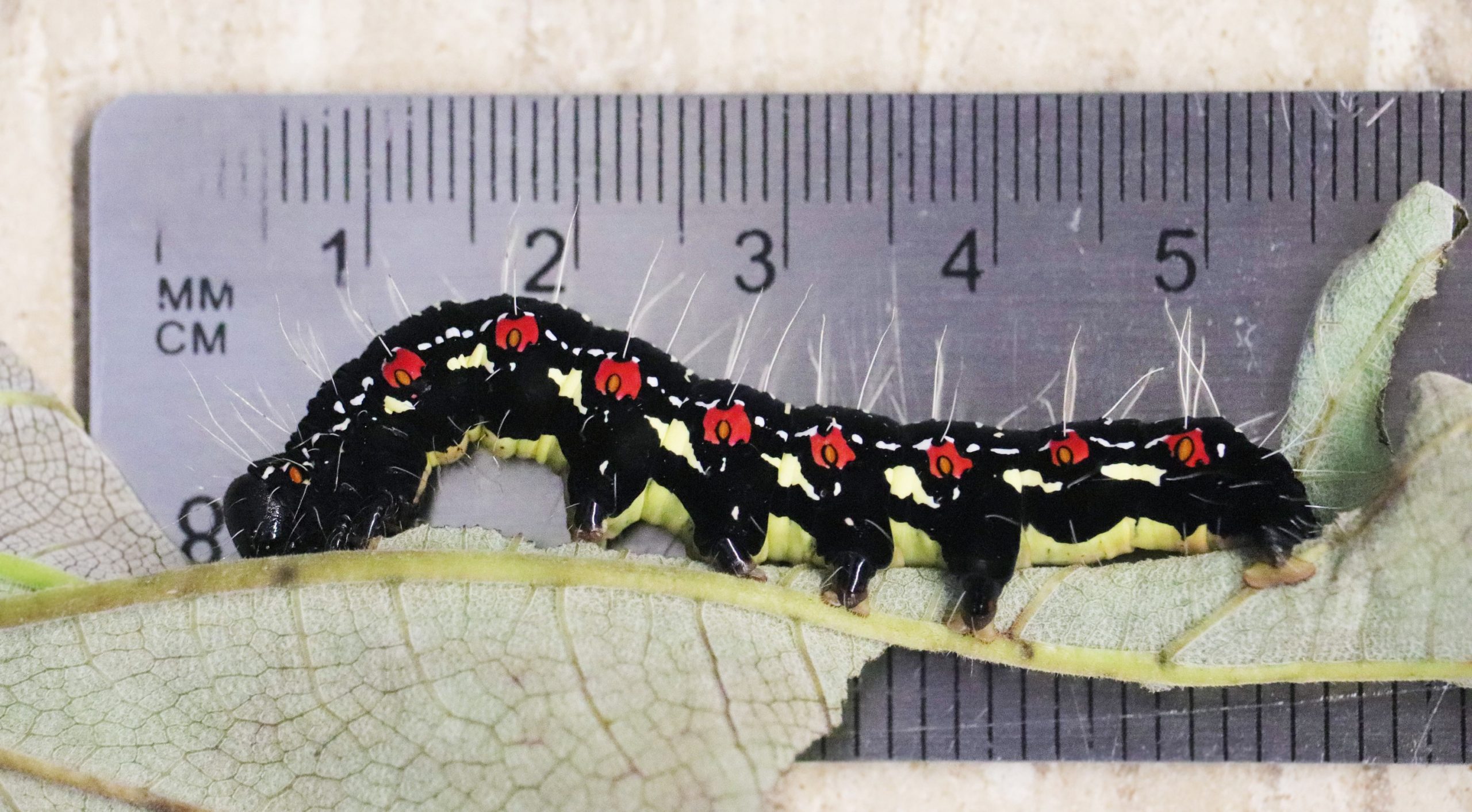
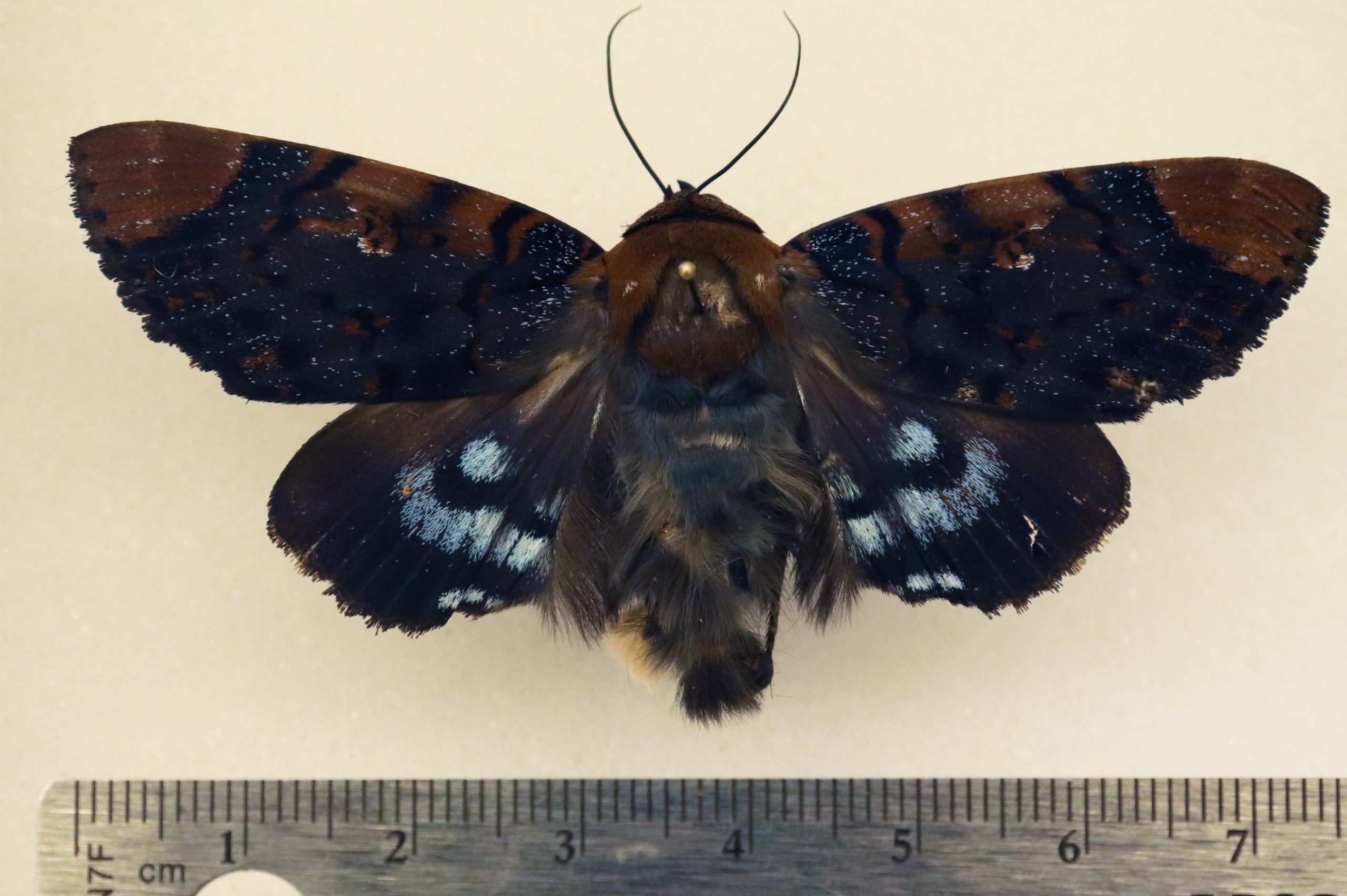
Photos L-R: HDOA, Michelle Au
Impacts:
- Destroys māmaki plants
- Competes for the same resources as the native Kamehameha butterfly
- Also feeds on other members of the nettle family
Description:
- Young caterpillars are green with a black head and markings
- Later instar caterpillars are covered sparsely in long white hairs, have red dots along their side, and can be either yellow or black
- Caterpillars range from 2 mm – 10 cm
- Adult moths are around 3 cm from head to the tip of the abdomen with a 6-9 cm wingspan
- Moth wings are brown with black markings and scalloped edges
- Hind wings have silver-white markings
Identifying Ramie Moth
Ramie moth and the Kamehameha butterfly can look very similar, especially at the early stages. Here are some things to look for when trying to ID a caterpillar on your māmaki plant:
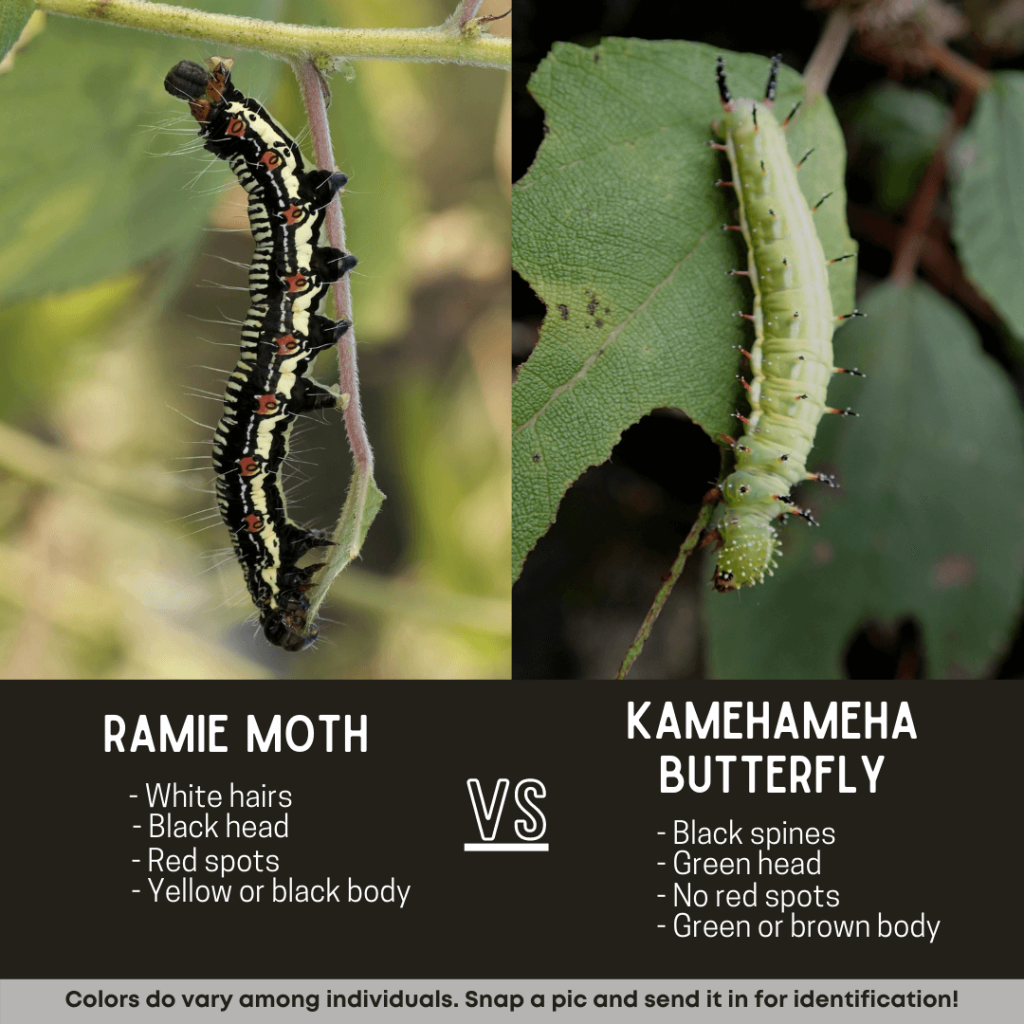
Ramie Moth:
- Early instar head capsule is tan and darkens as it gets older
- Black dots on the side of body, dots turn red as it gets older
- Late instar is black or yellow
- White hairs
- Inching motion
- Eats the leaves from the center outward, leaving only the main veins
- When disturbed will run away or rear up and start spitting up fluid
Kamehameha Butterfly:
- Early instar head capsule is black
- Black spines
- Late instar is green or brown
- Crawling motion
- Folds leaf edges over to make a tent to hide in
- Not active when disturbed
